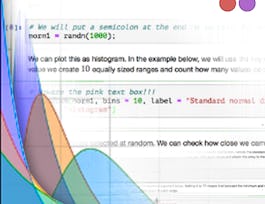This course provides a rigorous introduction to the R programming language, with a particular focus on using R for software development in a data science setting. Whether you are part of a data science team or working individually within a community of developers, this course will give you the knowledge of R needed to make useful contributions in those settings. As the first course in the Specialization, the course provides the essential foundation of R needed for the following courses. We cover basic R concepts and language fundamentals, key concepts like tidy data and related "tidyverse" tools, processing and manipulation of complex and large datasets, handling textual data, and basic data science tasks. Upon completing this course, learners will have fluency at the R console and will be able to create tidy datasets from a wide range of possible data sources.



The R Programming Environment
This course is part of Mastering Software Development in R Specialization


Instructors: Roger D. Peng, PhD
Sponsored by Coursera Learning Team
52,371 already enrolled
(1,164 reviews)
Skills you'll gain
Details to know

Add to your LinkedIn profile
4 assignments
See how employees at top companies are mastering in-demand skills

Build your subject-matter expertise
- Learn new concepts from industry experts
- Gain a foundational understanding of a subject or tool
- Develop job-relevant skills with hands-on projects
- Earn a shareable career certificate


Earn a career certificate
Add this credential to your LinkedIn profile, resume, or CV
Share it on social media and in your performance review

There are 7 modules in this course
In this module, you'll learn the basics of R, including syntax, some tidy data principles and processes, and how to read data into R.
What's included
1 video27 readings
What's included
1 assignment1 programming assignment
During this module, you'll learn to summarize, filter, merge, and otherwise manipulate data in R, including working through the challenges of dates and times.
What's included
11 readings
What's included
1 assignment1 programming assignment
During this module, you'll learn to use R tools and packages to deal with text and regular expressions. You'll also learn how to manage and get the most from your computer's physical memory when working in R.
What's included
9 readings
Choice 1: Get credit while using swirl | Choice 2: Get credit by providing a code from swirl
What's included
1 assignment1 programming assignment
In this final module, you'll learn how to overcome the challenges of working with large datasets both in memory and out as well as how to diagnose problems and find help.
What's included
7 readings1 assignment
Instructors


Offered by
Why people choose Coursera for their career




Learner reviews
1,164 reviews
- 5 stars
59.27%
- 4 stars
24.91%
- 3 stars
7.73%
- 2 stars
3.26%
- 1 star
4.81%
Showing 3 of 1164
Reviewed on Jun 17, 2019
A very good course to read and get the valuable content of R language. This is for the students who want to learn and practice the basic and some intermediate concepts of data manipulation.
Reviewed on Sep 13, 2021
Great Introduction, may we worth clarifying that for Data Manipulation the script must be saved before entering submit() as you cannot make progress.
Reviewed on Dec 25, 2018
Very Very Rigorous Course for a beginner on R language and because of its nature, after completing just one course, I feel like I have gained a lot of knowledge and also familiarity with R language.
Recommended if you're interested in Data Science

ESSEC Business School

University of Cape Town

University of California, Irvine

Duke University

Open new doors with Coursera Plus
Unlimited access to 10,000+ world-class courses, hands-on projects, and job-ready certificate programs - all included in your subscription
Advance your career with an online degree
Earn a degree from world-class universities - 100% online
Join over 3,400 global companies that choose Coursera for Business
Upskill your employees to excel in the digital economy


